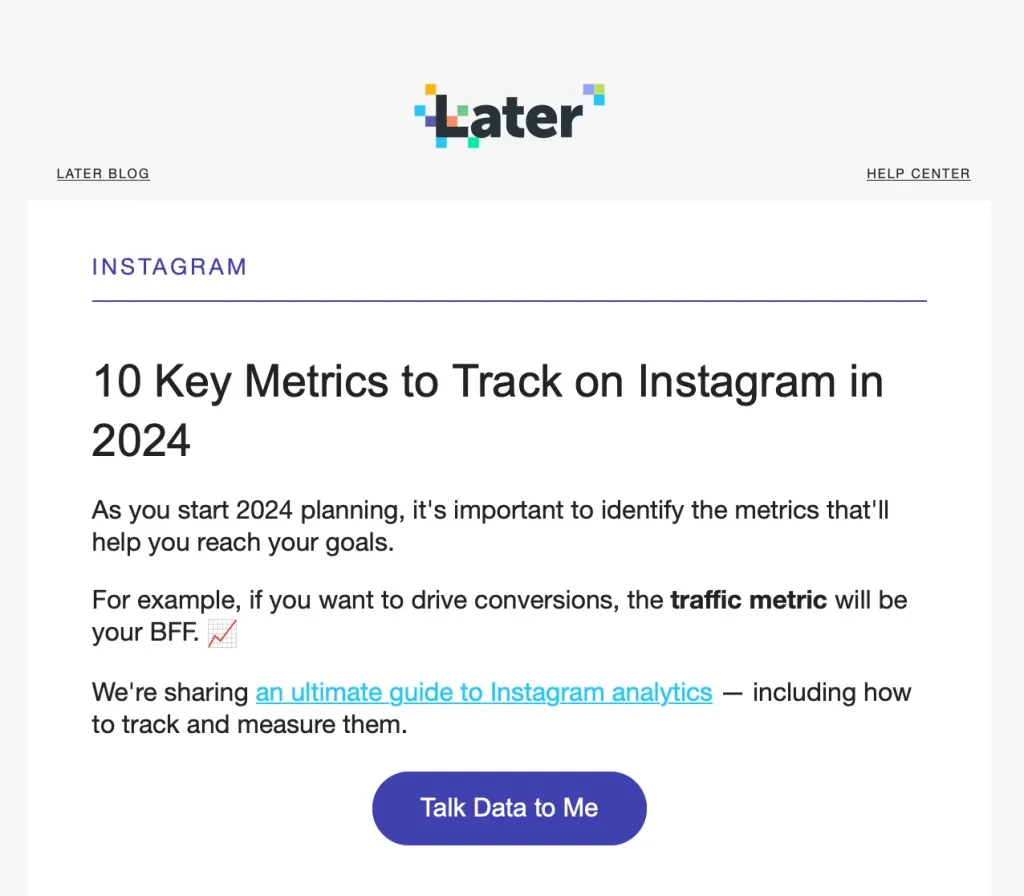If your business runs a blog, it’s likely you spend a decent chunk of time creating blog content that looks to resonate with and support your audience, but for that content to be effective as part of your marketing strategy, the right people need to read it. Email marketing is a great way to get your blogs in front of the right audience, increasing engagement and boosting sales.
Here, we will discuss how your business can use email marketing to promote your blog effectively and boost your business.
Table of Contents
What is email marketing?
How to use email marketing for blog promotion
Foundations of email marketing – building your email list
Segmenting your email list
Crafting compelling email content
Get started with email marketing
What is email marketing?
Email marketing is a digital marketing strategy that involves sending emails to a group of people to promote products and services or build relationships with customers. It’s a direct and cost-effective way for businesses to communicate with their audience.
Email marketing is effective because the recipients, i.e. potential customers, have likely opted-in to receive emails, so it’s a great means to connect with them directly. In addition, email marketing isn’t impacted by external factors such as social media algorithms.
How to use email marketing for blog promotion
An email newsletter is a key part of a successful marketing strategy for many businesses and a great way to share blog content with your audience. By building a newsletter list and sending valuable, personalized content, you can increase engagement, drive traffic to your blog, and grow your social media presence.
Foundations of email marketing – building your email list

Building an email list is the first critical step to getting your email marketing strategy off the ground. But how do you get people to sign up?
Here are some strategies to help you build a robust and engaged email list:
Create compelling sign-up prompts
Place prominent and visually appealing sign-up prompts on your website, blog, and social media profiles. Clearly communicate the value subscribers will receive by signing up, such as exclusive content, discounts, or regular updates.
Offer incentives
Provide a lead magnet or incentive to encourage sign-ups – this could be a free ebook, a downloadable resource, a webinar, or access to exclusive content.
Use landing pages
Create dedicated landing pages with a focus on capturing email addresses. The benefit of landing pages is that they can be highly optimized for conversion, including being linked to from various channels.
Optimize pop-ups
Use exit-intent or timed pop-ups on your website to capture visitors’ attention before they leave. These are similar to regular sign-up prompts except that they pop up when someone visits your website. While these can be effective as they grab the viewers’ attention, ensure they are well-designed and not intrusive.
Run contests and giveaways
Host contests or giveaways that require participants to enter by providing their email address. While this can quickly expand your list and generate excitement, the quality of the leads may not be as good because the entrants may be more focused on winning than engaging with your business, unsubscribing after the contest is over.
Remember to respect user privacy when collecting and managing email addresses and adhere to relevant data protection regulations, such as the GDPR or CAN-SPAM Act. Additionally, always provide transparent information about how you will use subscribers’ data and allow them to opt out at any time.
Building a high-quality email list takes time, so focus on engaging with your audience and providing value to encourage long-term relationships.
Segmenting your email list
Personalization is one of the biggest benefits of email marketing; therefore, segmenting your email list is a crucial aspect of email marketing that can significantly enhance the relevance and effectiveness of your email campaigns. Statistically speaking, segmented email marketing campaigns average 46% higher open rates.
By dividing your subscribers into specific segments based on various criteria, you can tailor your messages better to meet the unique needs and preferences of each group.
Additionally, segmented campaigns result in higher open and click-through rates because subscribers are more likely to interact with content tailored to their needs.
How to segment your email list
There are many ways you can segment your email list to tailor your email messaging, including:
- Demographic information: Collect and use demographic data such as age, gender, location, and job title to create segments. This is especially useful for businesses with products or services that cater to specific demographics.
- Purchase history: Segment your list based on the purchase behavior of your subscribers. This allows you to send targeted offers, product recommendations, or exclusive deals to previous buyers.
- Engagement level: Segment subscribers based on their engagement levels, such as opens, clicks, and time spent on your website. Identify and re-engage inactive subscribers with special offers or reactivation campaigns.
- Preferences and interests: Use preferences and interests gathered during registration or through surveys to create segments. Tailor content to match the specific topics or products each group is interested in.
- Behavioral segmentation: Analyze user behavior on your website or app to create segments. For example, segment users who abandoned their shopping carts or those who frequently visit certain sections of your site.
- Subscriber lifecycle: Consider where subscribers are in their customer journey, including whether they are new subscribers, first-time buyers, or long-term customers, and tailor your messaging to each stage.
Most email marketing platforms (e.g., Mailchimp, Constant Contact, ActiveCampaign, or HubSpot) offer robust segmentation features where you can create segments based on various criteria and send targeted campaigns.
Remember to regularly review and update these segments as your business and audience evolve. Consistent analysis and adjustment will ensure that your email marketing efforts remain effective and aligned with the changing needs of your subscribers.
Crafting compelling email content
Once you’ve thoughtfully built and segmented your email list, it’s time to create your emails. Crafting effective marketing emails for blog content involves compelling writing, thoughtful strategy, and careful attention paid to your audience’s preferences.
Here are some tips to help you write engaging and effective marketing emails for promoting blog content:
1. Start with a strong subject line

The subject line is the first thing your audience will see when they receive an email, so you must make it attention-grabbing, concise, and relevant to the content of the email. Consider using curiosity, urgency, or personalization to increase open rates.
The preview text (the snippet of text visible in the inbox preview) is an additional opportunity to entice readers. Use it to complement your subject line and provide a glimpse of the value they’ll find in the email.
2. Create compelling content

Keep your email content concise, engaging, and focused on the most important information. Don’t simply re-share the content of the blog, but tease its main points or benefits to generate interest and clearly communicate what readers will gain by clicking through to the website.
Use a conversational tone and make your content scannable via clear headings, bullet points, and visuals.
3. Use engaging visuals
Incorporate eye-catching visuals, such as images or graphics, to break up text and make your emails visually appealing. Of course, ensure your visuals are relevant to the content and align with your brand.
4. Include a clear call-to-action (CTA)
Place a prominent and clear CTA that directs readers to click through to the blog post. Use action-oriented language and create a sense of urgency if appropriate.
Many people check their emails on mobile devices, so ensure your emails are mobile-friendly. Use a responsive design, keep paragraphs short, and use a legible font size.
Get started with email marketing
With email marketing, you can connect with your audience, drive growth for your blog, and build a successful online presence. Simply keep in mind the first three steps – choosing an email marketing platform, building your email list, and setting up welcome email automation – and away you go!
For more business tips and strategies, keep reading Alibaba.com Reads.




